APPs for Android and iOS
Introduction
One of the main lines of the Multimedia Communications Group is the development of mobile applications for Android and iOS (and many years ago also J2ME). Our main strength is the development of audio and video applications. In this sense, we have published an open source library called LOKU, which allows to manage the Android audio system as streams through RxJava 2, which you can find in our open source section.
We are open to the development of all types of mobile apps. And if you want to discover what we have done so far, the following sections show some of the apps we have developed:
Monitoring of shots in a paddle racket
In a collaborative work carried out with Photonics Research Labs (PRL) from iTEAM, we carried out the development of a mobile app to monitor the shots hitted in a paddle racket in real time.
To do this, more than 40 optical sensors were inserted into a paddle racket to control the position of the hit, the force of the hit and the hitting time.
Thus, the app allows to see in real time the position of the racket where the last shot was hit, as well as the strength and hitting time. It also allows to select the result of a point (won/lost) and view the scoreboard.
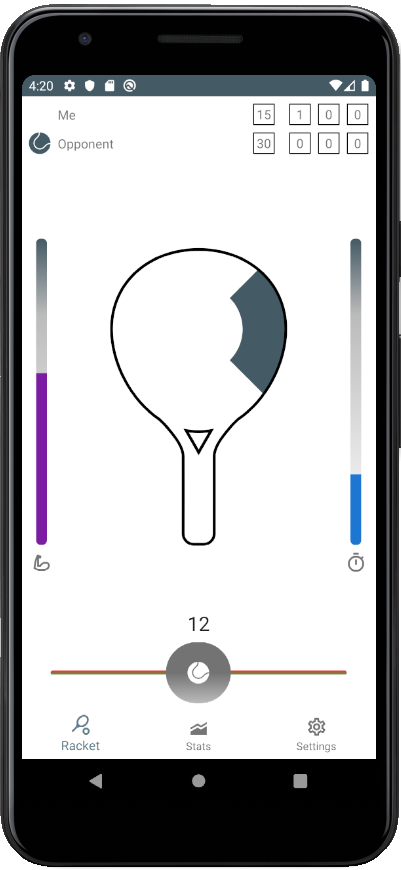
In addition, the app allows to see last point statistics, global statistics as well as stats of each individual point that has been played.
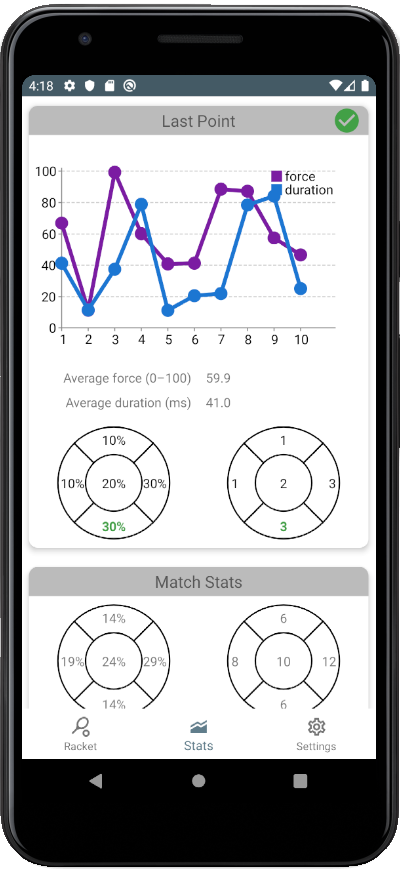
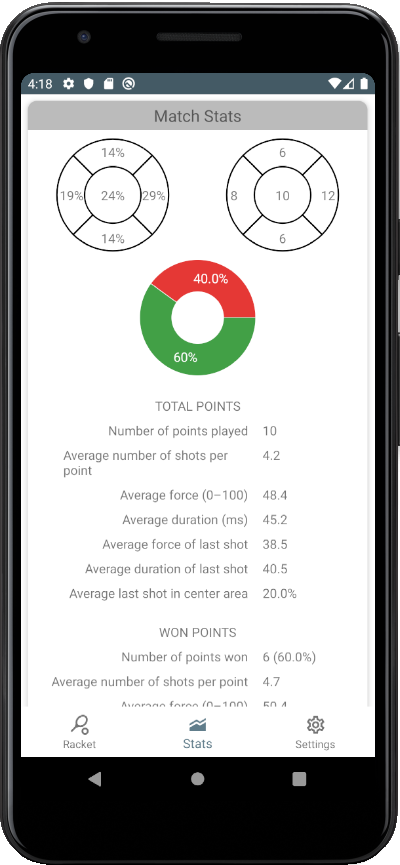
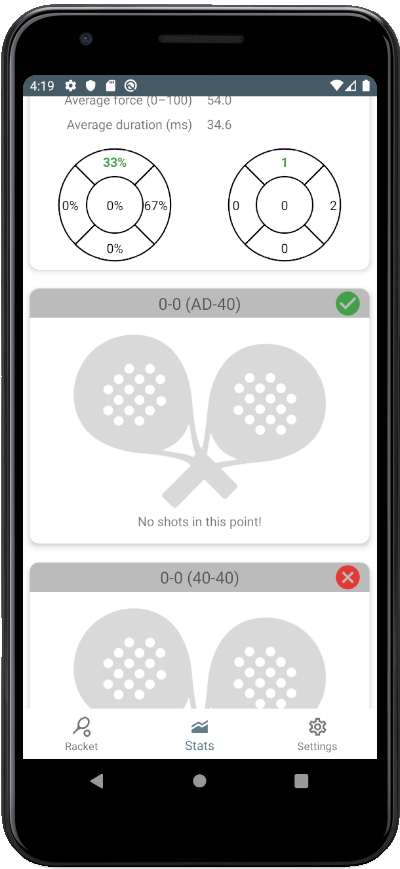
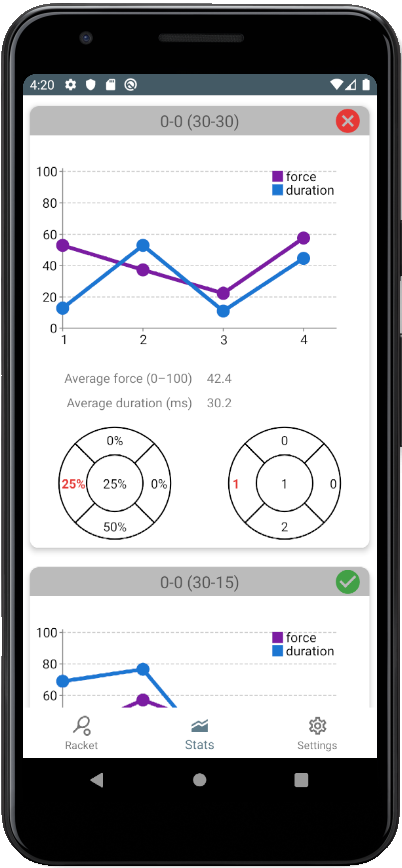
Also, it has different configuration and personalization features.
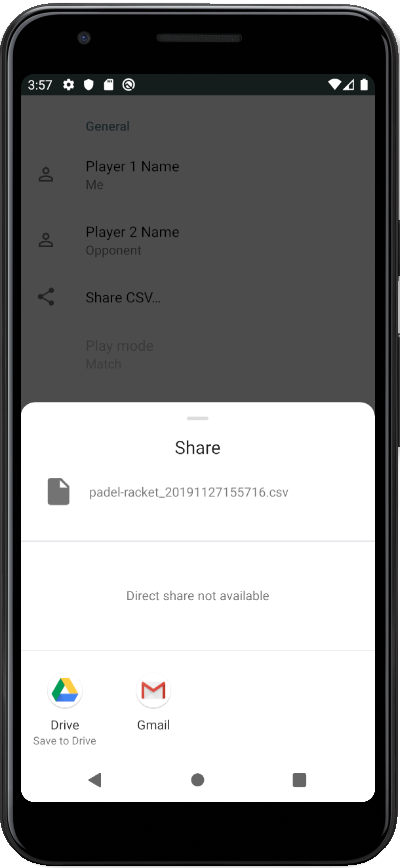
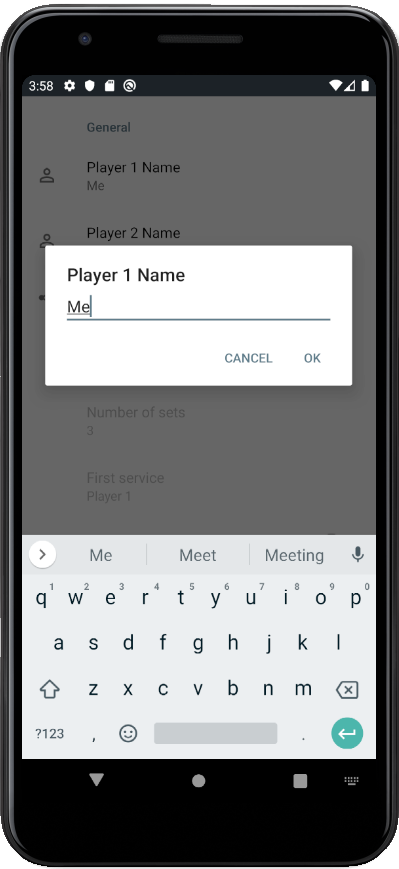
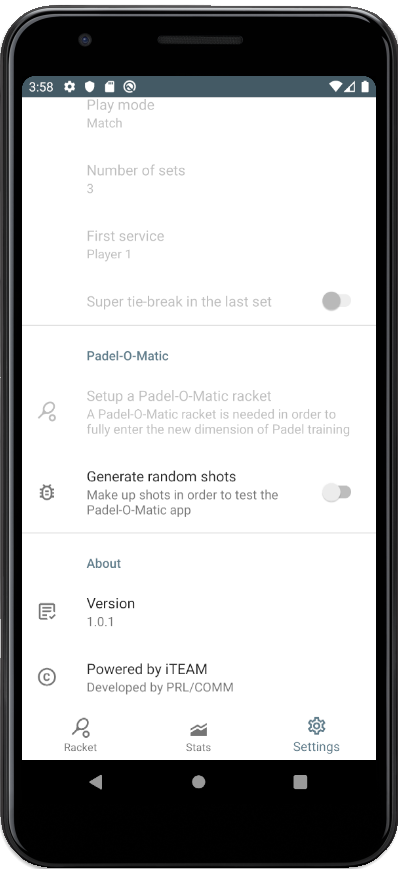
On board entertainment
In conjunction with the company Azimut Electronics, we have developed an on board entertainment mobile app for buses (coaches), trains and boats. The app is designed for Android devices (available on Google Play) and iOS devices (available on the Mac App Store) for both mobile phones and tablets. Also, there is a version for web browsers.
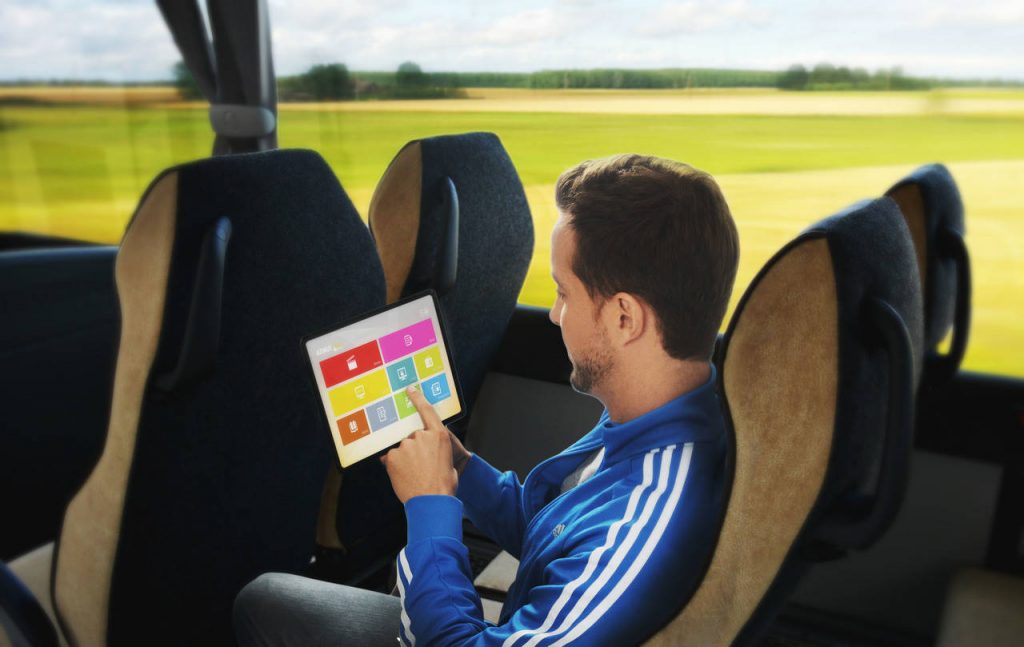
The app allows to watch movies and TV series, offers live TV and radio, listen to music and podcasts, read books and magazines, and other additional applications (games, tourist guides…).
Below, a couple of screenshots are shown:
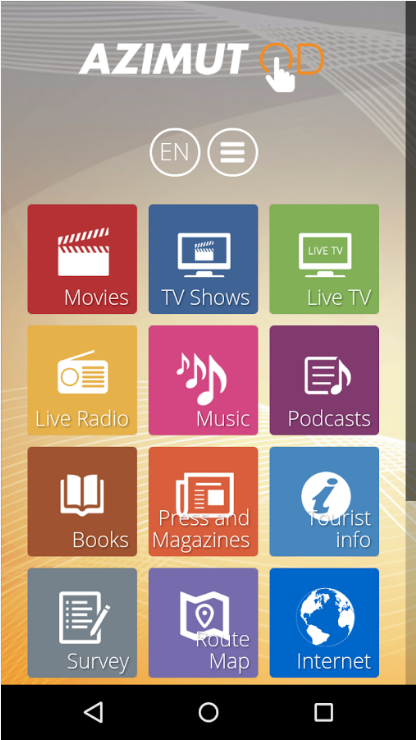
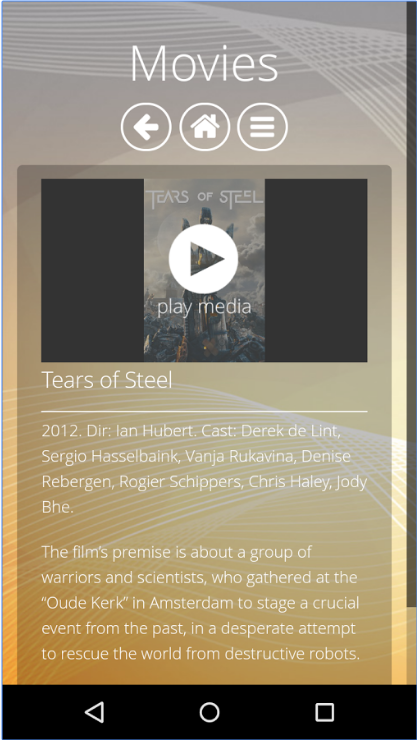
More information in the official webpage of Azimut Bus Solutions.
Voice communications through bluetooth and Wi-Fi
The app Motorcomm (available on Google Play) allows communication between drivers in motion, either between the driver and the passenger, or between drivers of two or more motorcycles. All this through bluetooth and Wi-Fi.


An evalution of that app, developed by one of the developers of the Multimedia Communications Group, is called Intercom for Android, with more than 600.000 downloads on Google Play. The version for iOS is called iNtercom for iOS, available in App Store.
Broadcasting of multimedia contents in a shopping center
Within the COMINN project, Multimedia Communications Group has participated in the development of a smartphone APP that is responsible for broadcasting multimedia content to the customers of a shopping center through multicast. The application is based on the FLUTE protocol and LDPC codes to protect information in a broadcast environment (where there is no return channel). Customers identify themselves upon arrival at the mall and enter their personal details and preferences. Based on this information, the system recommends them content channels (for example, cinema schedule, offers in clothing stores, …), and customers can download and consume such content if they wish.
An example is shown in this video:
Sensorized social medial network
Within the REMEDISS project, it is developed a system that facilitates the follow-up of patients from their homes. The system is composed of a vertical social network that groups the information of each patient allowing each patient to connect with his/her doctor remotely. The development of the project involves the integration of information collected by sensors within the social network. To this end, the medical center may provide each patient who requires a set of devices composed of a gateway (mobile device or dedicated device that integrates different interfaces Wi-Fi, bluetooth, etc.) and the sensors required to measure the necessary parameters of each patient. The platform supports the representation of the elements (questionnaires, data, etc.) in multiple devices (TV, mobile, PC), in a way that abstracts all the technical complexities inherent in the deployment of teleassistance services in domestic or work environments. REMEDISS also allows therapists to integrate audiovisual content into work plans, as well as communicate directly with end users via video conferencing.
Below some screenshots of the app developed for Android are shown:
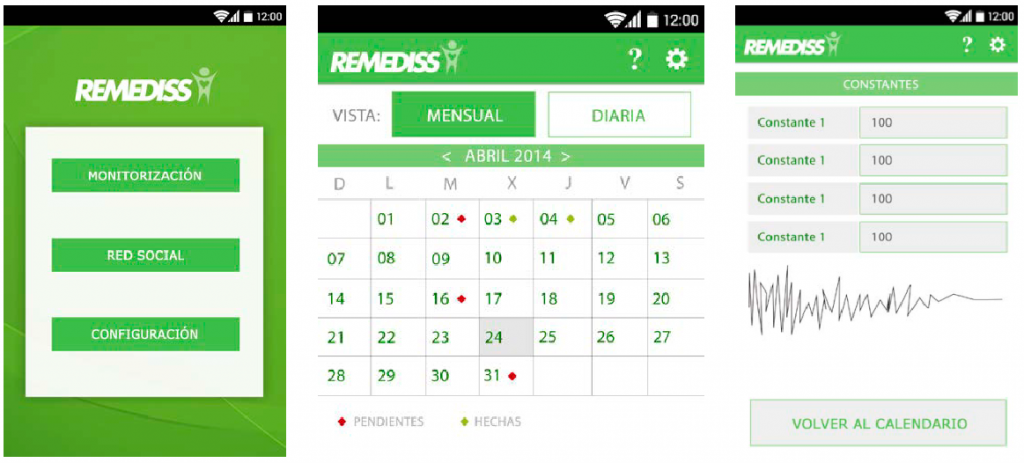
Interactive and personalized information system on audiovisual contents
The project GrafiTV develops a system that is able to overlap the information to the audiovisual content to allow the simultaneity of the information. The system is intended for use in connected TV sets and mobile devices.
You can see a demo of the project in web browser environment in the following link.
In addition, the following video shows the operation of the system on a mobile device (audio and text in Spanish):
Control of power consumption at home
Within the SimoViece project an APP for the control of household power consumption has been developed. The user can access detailed energy consumptions at any time and place and detect anomalies such as out-of-function computer equipment, unplanned consumption, etc. In addition, the application calculates from the net consumption of electricity, its equivalence in CO2 emitted to the atmosphere.
The application for mobile devices has been developed for Android devices. The following figures show the application interface through which the user can access the system functionality. Some of the options are: My Consumption (today, this week, this month), My Intervals, and Consumption Diary.
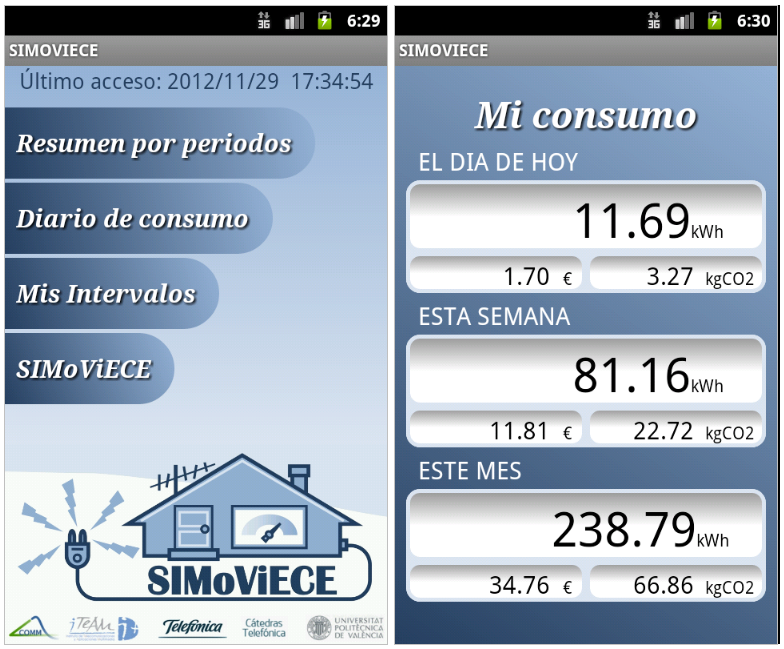
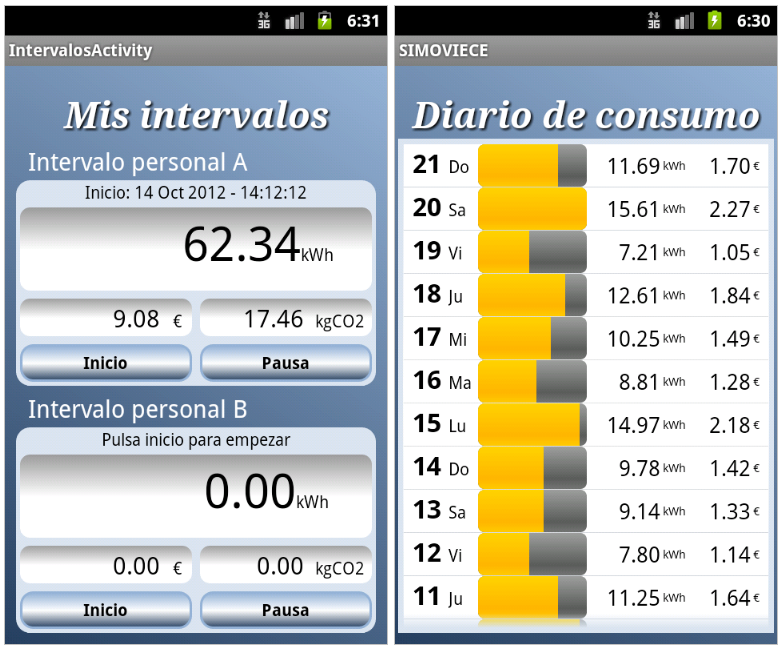
Elderwatch: Proactive teleassistance for dependent people
ElderWatch represents a remotely controlled tele-assistance system based on the use of mobile devices. The proposal is built on two pillars:
- The system does not have to be manipulated by the person to whom the service is offered.
- Communication with the user must be able to be done through speech without the user having to remember to take any action. That is, the system itself can initiate communication with the user to verify that he /she is well.
The proposed solution is based on the placement of mobile terminals placed by the different rooms of the user’s house. These terminals act as sensors and serve to detect calls for help / relief by the user. That is, the application warns that an alert condition has occurred when the user requests help.
Also, terminals perform monitoring to the user. To that extent, the cameras of the mobile devices are used. In addition, Elderwatch can check if the user responds to certain calls, asking the user with a certain periodicity if he/she is well. If he/she does not respond to calls, the system considers this as an alert.
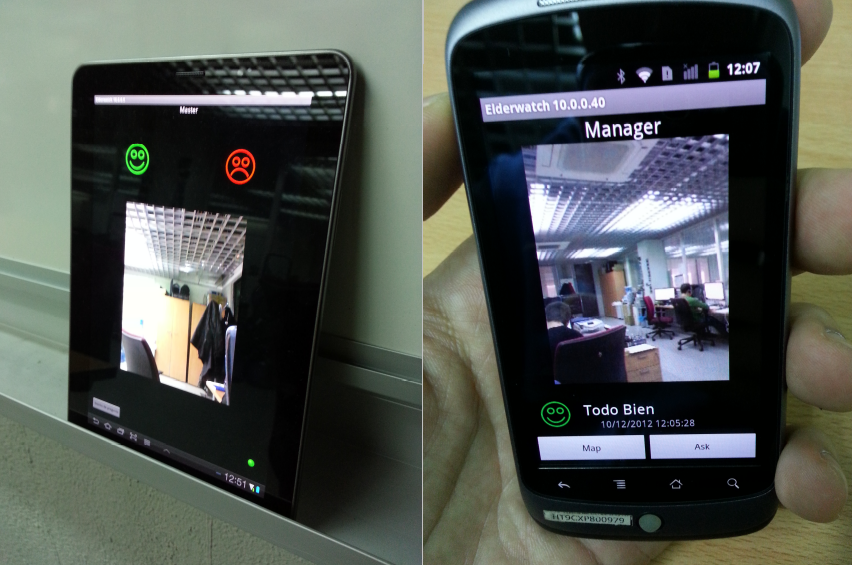
Elderwatch’s interface is extremely simple. It is based on voice and a graphic interface of two buttons: a smiling green face and a sad red face. Elderwatch is at all times listening to a distress call. The moment it detects it, it sends an alarm. The alarm goes to the Smartphone of who is in the care. This person receives a message with the time that has occurred and a photograph of the device that has detected the request for help. In addition, Elderwatch is designed to ask simple, periodic questions. If the questions are not answered within a period of time the system sends an alarm. Regardless of the alarm status, the caregiver may ask Elderwatch to ask the dependent person a question to see if he or she is feeling well. It is also possible to access in real time each of the cameras of the devices installed in the house. The following are different screens of the interface:
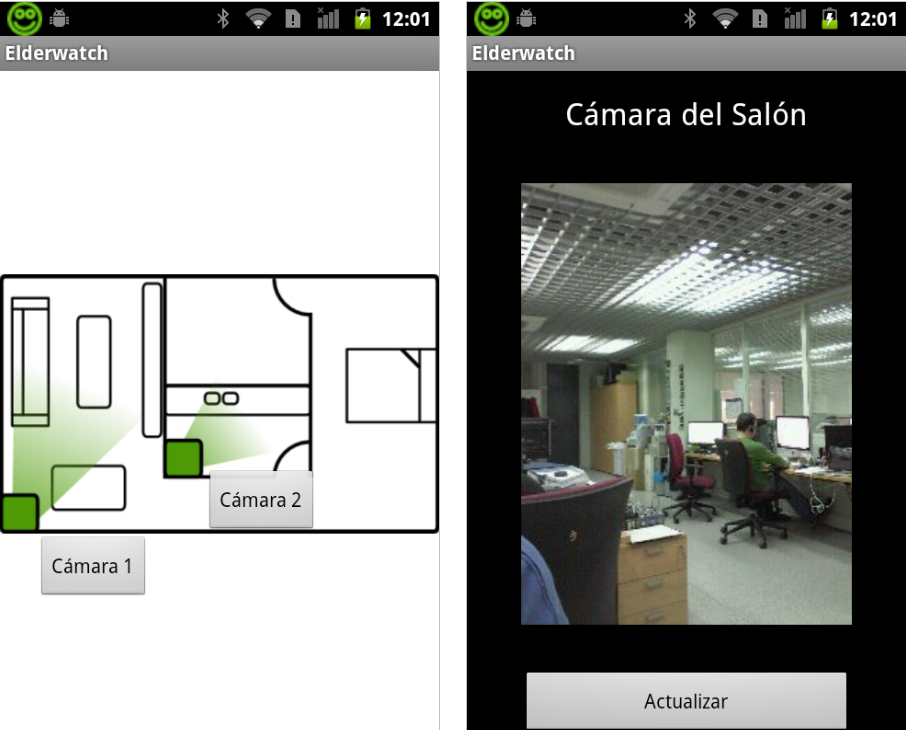
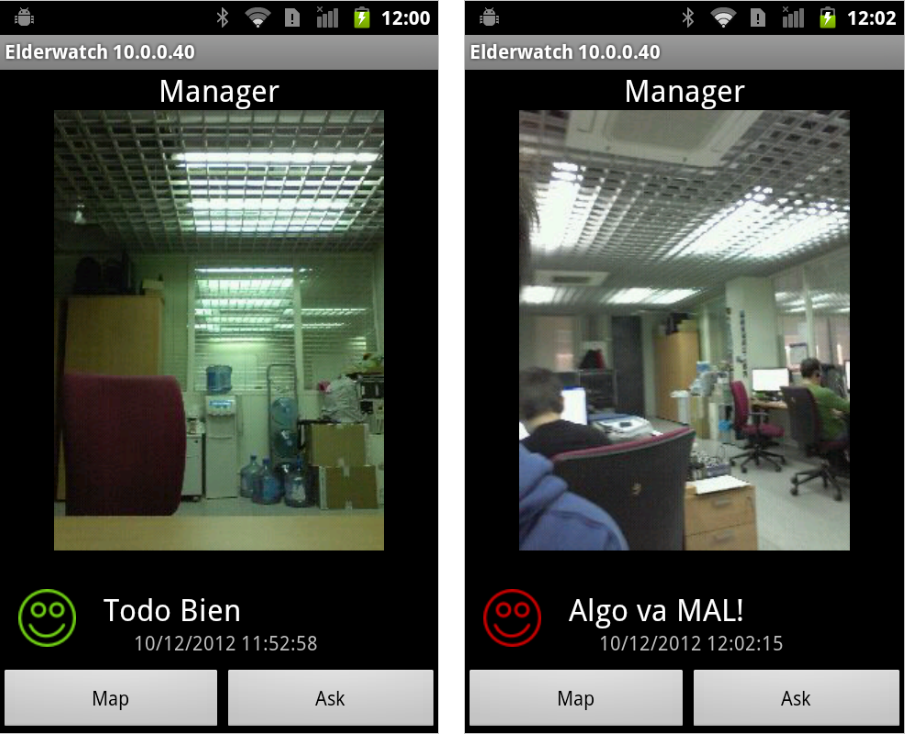
The following video shows the functionality of the system.
In an extended version, the use of biometric sensors such as heart rate meters has been integrated. Thus, in the case of detecting an anomaly, an abnormal descent or rise of the pulsations, the application sends a warning to the relative with the information of the incidence, as you can see in this video (audio in Spanish).
Twitter client for mobile devices
Multimedia Communications Group has developed a client for Android devices to manage the Twitter app through voice commands. The app allows to access social networks for people with visual or motos impairment.
More information in this video (audio in Spanish):
